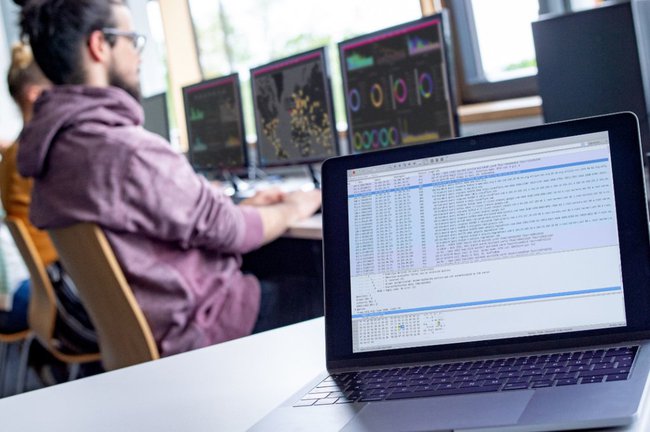Detecting Fake News Automatically
St. Pölten UAS Graduate Develops Fake News Detector

Armin Kirchknopf, a graduate of the degree programme Interactive Technologies at the St. Pölten University of Applied Sciences, has developed an automatic detector for fake news within the framework of his thesis and a research project.
The programme uses artificial intelligence techniques to classify messages by evaluating texts, images and other information from social media.
Manual Identification is Time-Consuming
On the internet and on social media, it is often difficult to tell the difference between fake news and real news. Research platform employees sometimes need to invest much time to get things straight. In his master thesis “Automated Identification of Information Disorder in Social Media from Multimodal Data”, Armin Kirchknopf, graduate of the master degree programme Interactive Technologies and research assistant in the research group Media Computing at the St. Pölten UAS, developed methods that allow for the automatic detection of potential fake news — at least in a first step.
“The manual identification of fake news and rumours is a very demanding task – even for experts. In light of the steadily growing amount of data, I wondered whether fake news could also be detected and evaluated automatically by using data analysis,” says Kirchknopf.
Many Aspects and the Context Are Decisive
There have already been attempts to do so, but existing methods mostly focused on a specific type of data (e.g. text) and a limited amount of datasets. Kirchknopf's Fake News Detector combines a variety of information, such as text, images and comments.
He also uses other so-called meta information from social media. This includes information on the users’ verification status, approving or dismissive reviews of a post, the number of comments it received, and whether it was shared. Based on a dataset of more than 1 million entries from the platform reddit.com, Kirchknopf developed an automatic method for detecting potential fake messages. In principle, the detector could also be used for other platforms if adjusted accordingly.
Kirchknopf built his Fake News Detector based on neural network models from the field of artificial intelligence, and on methods of natural language processing (NLP) and computer vision. The aim was to develop a system capable of learning that adapts to new topics and uses metadata from social media to improve the recognition of fake news.
Human Intellect Cannot be Replaced
The aim of Kirchknopf's work was to create a method that would enable users of social media channels to quickly identify news as fake or true. However, a message does not necessarily have to be one hundred percent fake, it can also be simply used to shift the public opinion in a certain direction or discredit something.
Kirchknopf pointed out that some pieces of news can fall into several categories. “It isn’t all about true or false. Fake news is not just a matter of black or white. The programme is designed to provide a context to quickly classify content. Often, the only classification is 'likely fake'. To go into depth, more research and further large datasets are needed. In the end, common sense, which can only be provided by human intellect, is still decisive,” says Kirchknopf.
Project Fake News Detection
The project was funded by a grant of the internet funding initiative netidee.